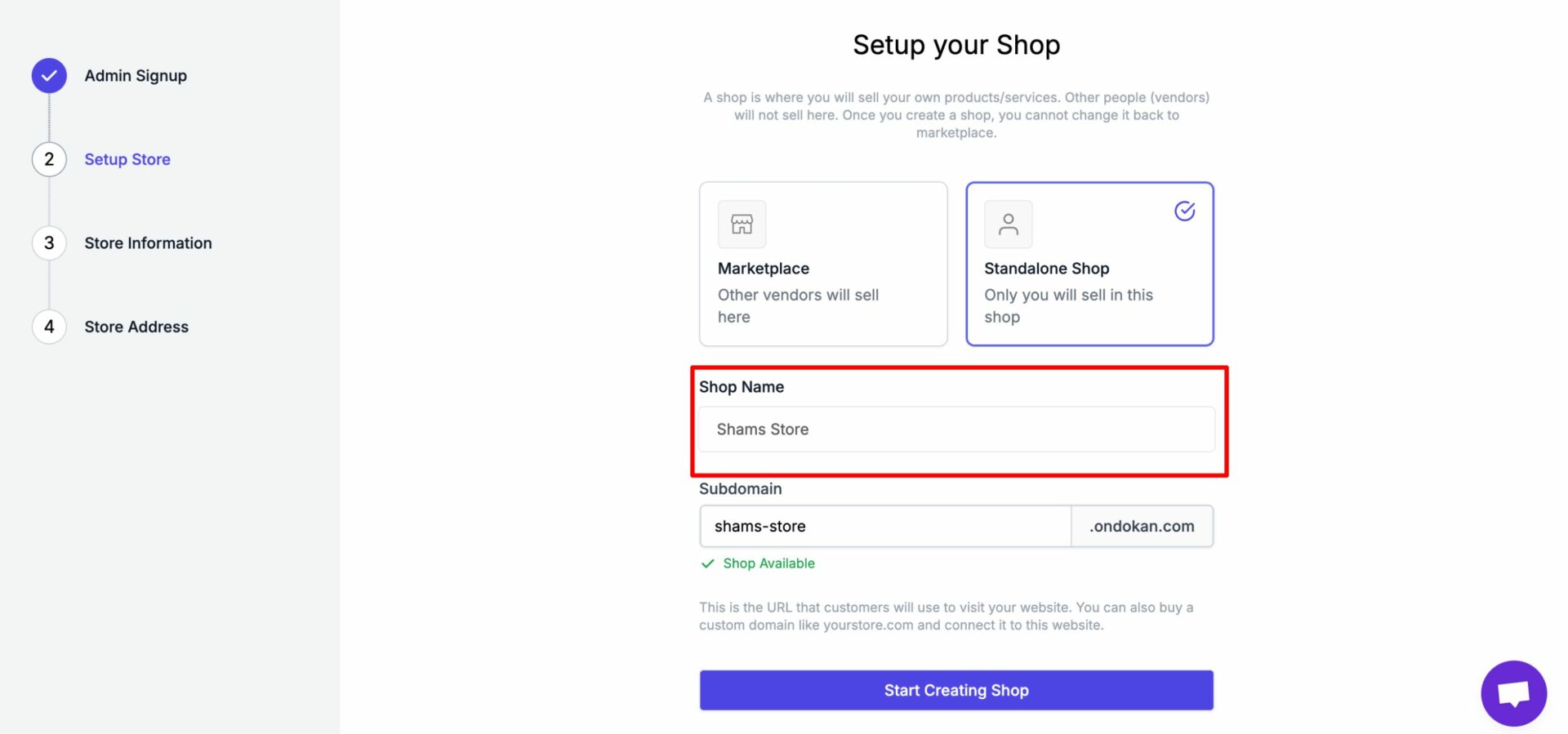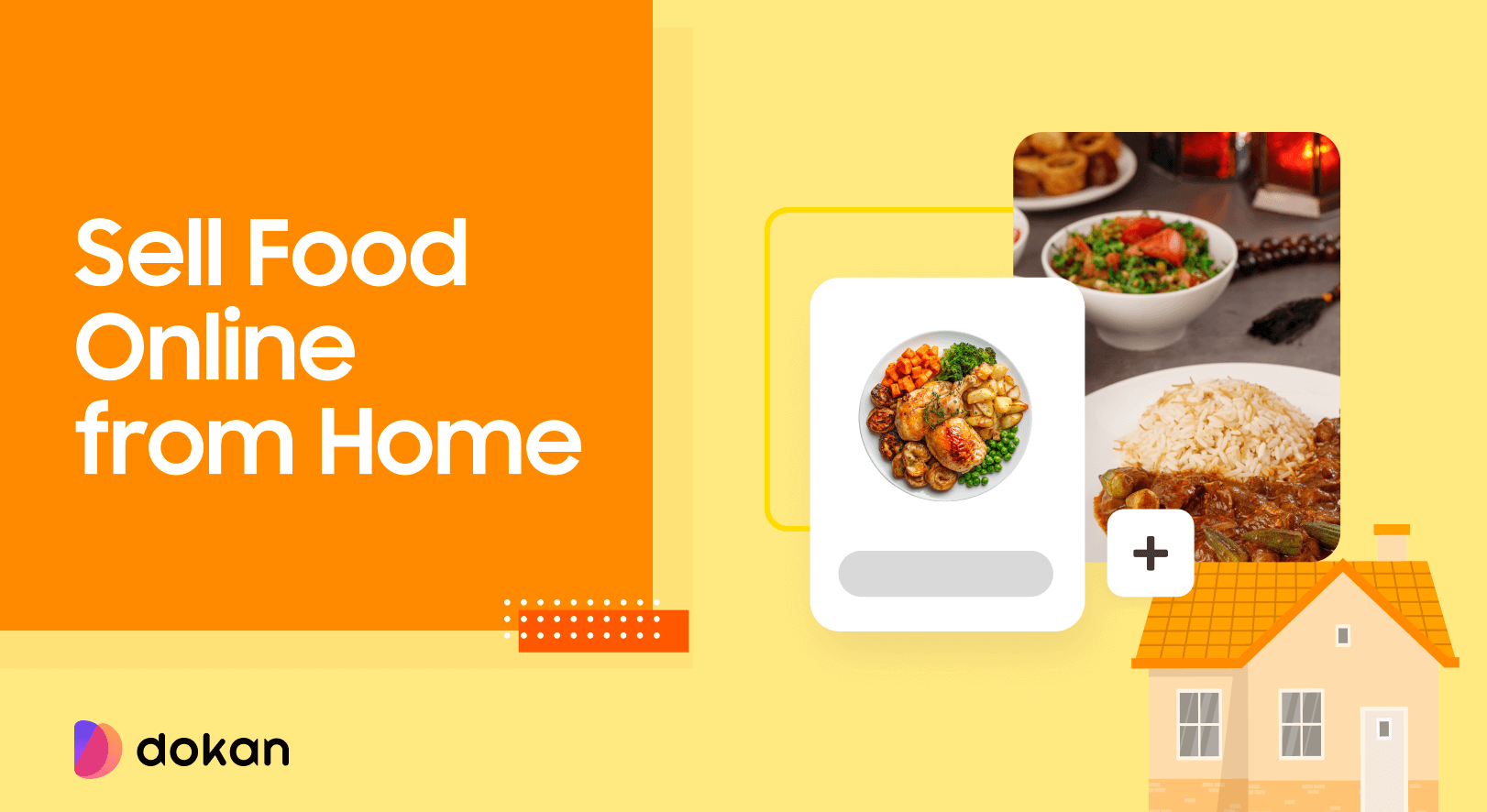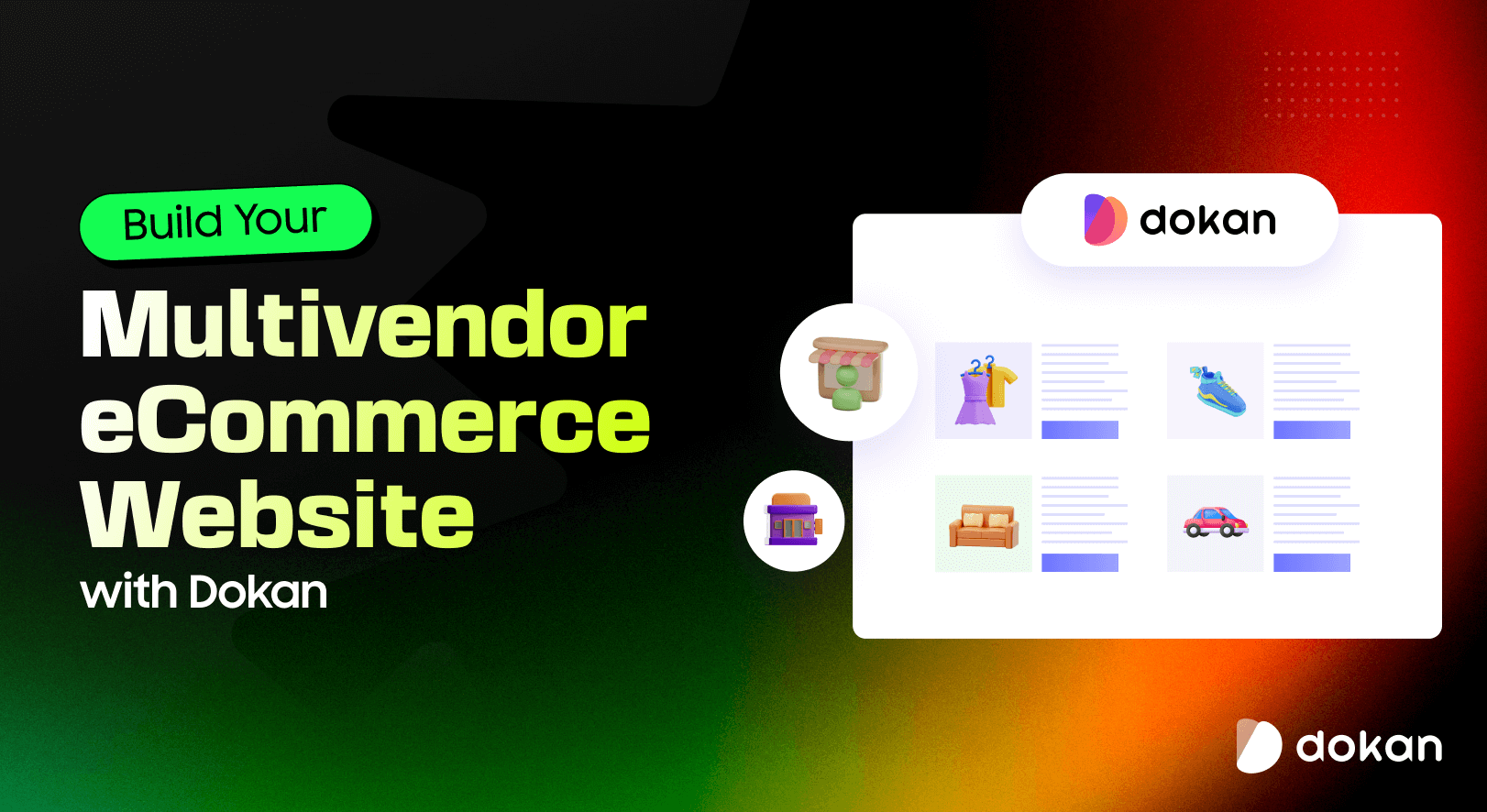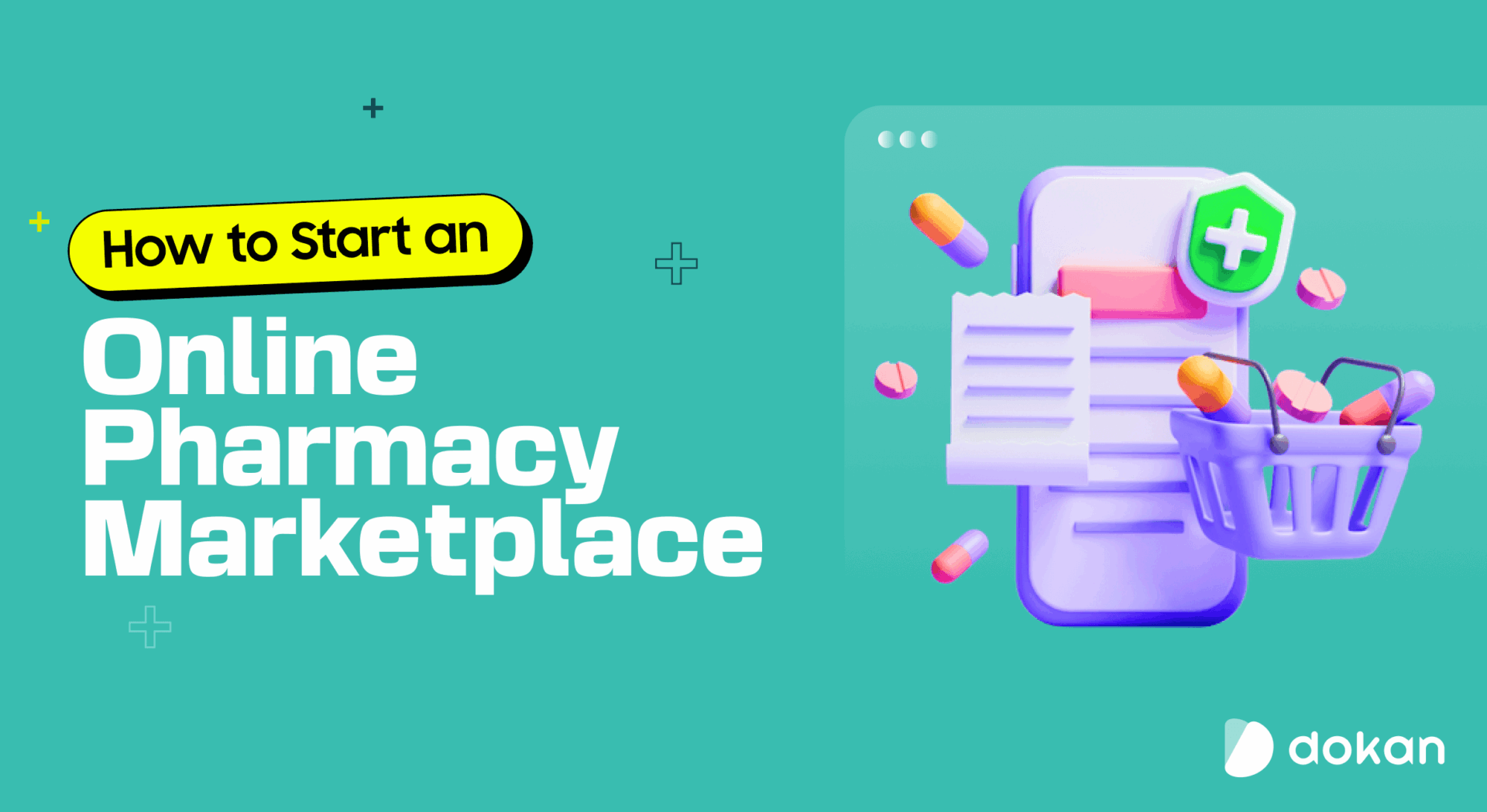Do you want to sell food online but don’t know where to start? You’re not alone. A lot of people dream about turning their cooking skills into a business, but things like getting licenses, setting up a store, and getting customers can feel overwhelming. It’s easy to overthink and never actually start.
But here’s the thing, you don’t need to have everything figured out on day one. With the right steps, you can handle the legal stuff, set up your online store, and start selling without getting stuck in confusion.
People are already making money selling homemade meals, baked goods, and specialty foods. There’s no reason you can’t do it, too.
To assist you in this journey, today we are here with our detailed guide – how to sell food online. You will get everything in this guide. So, without any further ado, let’s get started!
Is Selling Food Online Profitable?
Selling food online can definitely be profitable. The online food delivery market has been growing fast and shows no signs of slowing down. In fact, it’s expected to reach over $1.40 trillion in 2025 and keep growing at a solid pace.
Here’s why it’s a good business to get into:
- Growing Demand: More people are ordering food online than ever before. Consumers enjoy the convenience of having food delivered to their door. In fact, 70% of people prefer ordering directly from restaurants rather than using third-party services.
- High Market Potential: With the market growing at a rate of 7.83% annually, the online food industry is expected to hit $1.89 trillion by 2029. That’s a lot of opportunity for anyone getting into the business.

But, like any business, it has its challenges:
- Competition: There are a lot of food businesses online, so standing out is key. You’ll need to find a unique angle or offer something different to capture attention.
- Costs: From production to delivery, there are ongoing costs that can affect your profits. Efficient operations are crucial to maintaining healthy margins.
Selling food online can be very profitable if you plan carefully, manage costs well, and know how to market your business effectively.
How to Sell Food Online – 9 Steps for a Beginner
These are the 9 steps that you should follow to start your online food delivery business:
- Identify Your Niche and Target Market
- Understand Legal Requirements
- Develop Your Brand and Packaging
- Set Up Your Online Store
- Plan Your Production and Storage
- Organize Payment and Delivery Methods
- Market Your Food Business
- Ensure Food Safety and Quality Control
- Handle Customer Service and Reviews
Now, let’s get into the details!
01. Identify Your Niche and Target Market
Before jumping into the online food business, you need to figure out who you’re serving and what makes you stand out. This is where defining your niche and target market comes in. If you know who you’re catering to, it’ll be easier to create a brand and marketing strategy that speaks directly to them.

Here’s how to get started:
a) Pick a Niche
Instead of offering every type of food, focus on a specific area that you’re passionate about or that has untapped demand. Are you going to sell vegan snacks, homemade pastries, or maybe international street food? Whatever it is, finding a niche lets you focus your efforts on a specific audience.
b) Know Your Audience
Think about who is most likely to buy your food. Are they busy professionals looking for quick, healthy meals? Are they health-conscious individuals who need gluten-free options?
Or are they foodies craving something new and exotic? By identifying who your target customers are, you can better serve their needs.
c) Research Your Market
Look at what competitors in your niche are doing. What’s working for them? What’s missing? This will give you insight into what customers want and help you figure out how to offer something better or different.
d) Solve a Problem
Your niche should solve a problem or satisfy a need. Whether it’s providing a quick meal option for people on the go or offering comfort food to people who miss their hometown flavors, make sure you offer something that adds value to your customers’ lives.
02. Understand Legal Requirements

Before you start selling food online, you need to get familiar with the legal side of things. Running a food business involves more than just cooking and delivering—it requires meeting certain regulations to ensure safety, quality, and compliance with local laws.
Here’s what you need to know:
a) Food Safety Standards
Your business must meet health and safety standards to ensure your food is safe for consumption. This could involve getting your kitchen inspected by local health authorities. If you’re working from home, you might need to meet specific requirements or even upgrade your kitchen to meet those standards.
b) Food Business Registration
Most countries and regions require food businesses to register with the local food safety department. This could be a simple process or require some paperwork and inspections, depending on where you’re located. It’s a must to ensure you’re legally allowed to sell food.
c) Licenses and Permits
Different areas require different licenses, so it’s important to check what applies to your location. For example, you might need a food handler’s permit, a business license, or even a delivery permit. These documents show that you are authorized to prepare and sell food.
d) Labeling and Packaging Regulations
If you’re packaging food, make sure to follow regulations regarding ingredient labeling, nutritional facts, and allergen warnings. This helps protect both your customers and your business from potential legal issues related to food safety.
e) Local and National Regulations
Apart from food-related regulations, there may be local and national laws that apply to your online business, like taxes, delivery requirements, and even advertising rules. Make sure you’re aware of these to avoid any unexpected legal trouble down the road.
03. Develop Your Brand and Packaging

In the online food business, your brand and packaging can make a huge difference in how customers perceive your products. A strong, memorable brand will attract customers, and the right packaging will help deliver your food in a way that stands out and keeps it fresh.
Here’s how to develop both:
a) Create a Unique Brand Identity
Your brand is more than just a logo, it’s how people feel about your business. Start by deciding what makes your food business unique. I
- Is it the quality of the ingredients?
- The homemade touch?
- Your passion for a specific cuisine?
Once you know your brand’s core, create a name, logo, and a voice that reflects this. It should be something that resonates with your target audience and feels authentic.
b) Design a Memorable Logo
Your logo is often the first thing customers will see, so it needs to be eye-catching and professional. It should represent your brand and be easy to recognize. You can hire a designer or use online tools to create a simple but effective logo. Keep it clean, modern, and consistent with your brand’s vibe.
c) Develop a Consistent Brand Voice
Think about how you want to communicate with your customers. Is your brand friendly and casual or more formal and professional? Your tone should match the kind of food you sell and your target audience. This will reflect in everything, from your website copy to social media posts.
d) Design Your Packaging for Impact
Packaging is important not only for safety but also for making an impression. When your food arrives, customers should feel like they’re receiving something special.
Choose packaging that keeps your food fresh but also reflects your brand. Think about custom boxes, branded labels, or eco-friendly options to give your packaging a unique touch.
e) Make Packaging Practical
Packaging needs to do more than just look good; it should protect the food and make it easy to handle during delivery.
For example, if you’re selling drinks or liquid items, make sure your packaging is spill-proof. If you’re selling baked goods, look for packaging that keeps them fresh but also visually appealing.
04. Set Up Your Online Store
A well-designed online store makes it easier to attract customers and grow your food business. Building a website from scratch can be time-consuming and expensive, but Dokan Cloud Shop offers a smarter solution. It provides a ready-to-use eCommerce platform that lets you start selling food online without dealing with technical headaches.
With Dokan Cloud Shop, you don’t need to worry about hosting, security, or complicated setups. The platform takes care of everything so you can focus on your business.
You get a professional online store with built-in payment processing, order management, and delivery options. Customizing your store is simple, which allows you to create a unique brand experience without hiring a developer.
Running an online food business requires flexibility and efficiency. Dokan Cloud Shop makes it easy to update your menu, manage stock, and communicate with customers—all from a single dashboard. The platform is designed to support food entrepreneurs, giving you the tools to grow and scale your business smoothly.
Choosing Dokan Cloud Shop means getting a reliable, hassle-free online store that’s built for success. If you want to start selling food online quickly and professionally, this is the perfect solution.
How to Get Started with Dokan Cloud Shop
Getting started with the Dokan Cloud Shop is easy and straightforward. First, go to the Dokan Cloud Shop pricing page and choose a package for you.

Then, log in to your account and set up your eCommerce store.

To complete the customization part and start selling from your eCommerce store, follow our step-by-step documentation.
05. Plan Your Production and Storage
Planning your production and storage is crucial when selling food online. You need to ensure you can consistently meet demand while keeping your food safe, fresh, and of high quality. Here’s how to plan this important part of your food business:

a) Decide How You’ll Produce Your Food
You have two main options –
- you can prepare food yourself,
- or you can outsource production to a kitchen or food manufacturer.
If you’re making food yourself, you’ll need to set up a commercial kitchen or work with a licensed kitchen facility. And if you’re outsourcing, research potential food producers who meet your quality and safety standards. Make sure you can rely on them to meet demand and maintain quality.
b) Calculate Production Capacity
Determine how much food you can produce in a day, week, or month based on your kitchen capacity, time, and labor. If you’re working alone, this may limit the number of orders you can fulfill.
Be realistic about your production limits, and plan accordingly. As your business grows, you can scale production by hiring help or upgrading equipment.
c) Consider Food Safety Regulations
Food safety is vital. You’ll need to follow local regulations for food production, including safe handling, storage, and transportation. In many areas, you’ll need certifications or inspections for your kitchen or food preparation process.
Make sure you understand what is required in your area to avoid potential issues with health inspections or customer safety concerns.
d) Choose Your Storage Method
You’ll need a proper space to store ingredients and finished products. Depending on the type of food, this may involve cold storage, freezers, or dry storage areas.
If you are running a small operation, you may need to rent space in a commercial kitchen that offers storage options. Larger operations might need to invest in their own warehouse or storage units.
e) Inventory Management
Keeping track of inventory is important to prevent waste, overproduction, or running out of key ingredients. Use inventory management software or tools to help you track ingredients, packaging materials, and finished products.
This will help you order supplies in advance and stay on top of your stock levels to avoid delays in production.
06. Organize Payment and Delivery Methods

When selling food online, setting up reliable payment and delivery methods is essential for smooth transactions and customer satisfaction. Here’s how to organize these critical elements for your business:
a) Choose a Payment Gateway
First, you’ll need a secure payment gateway to process payments. Popular options include PayPal, Stripe, and Square. These platforms make it easy for customers to pay with credit cards, debit cards, or digital wallets.
Choose a payment provider that is user-friendly, secure, and widely trusted. Also, make sure the gateway integrates well with your online store.
b) Offer Multiple Payment Options
To cater to a wide audience, offer various payment methods. In addition to credit and debit cards, consider accepting mobile payments (like Apple Pay or Google Pay) and even cash on delivery, depending on your customer base.
Providing multiple options increases the likelihood of conversions, especially for customers who may have preferences for certain payment methods.
c) Set Clear Pricing and Fees
Be transparent about the cost of your food, including any additional fees such as delivery charges. Consider offering free delivery for orders over a certain amount to incentivize customers to purchase more.
If you’re offering special deals or discounts, make sure the final price after applying discounts is clearly shown during checkout.
d) Select a Delivery Service
When it comes to food delivery, you have a few options. You can handle deliveries in-house or partner with a third-party delivery service like Uber Eats, DoorDash, or Grubhub. If you’re offering nationwide delivery, consider using carriers like UPS, FedEx, or USPS.
When selecting a delivery service, prioritize reliability, delivery speed, and the ability to maintain food safety standards during transit.
e) Return and Refund Policies
Make sure you have clear policies regarding returns and refunds, especially in the event of food arriving damaged or spoiled. While food delivery businesses rarely offer returns, being transparent about your refund process helps build trust.
This includes offering a full refund or replacement if something goes wrong with the delivery or if the food doesn’t meet expectations.
07. Market Your Food Business

Marketing is essential to get your food business noticed and grow your customer base. Here’s how you can effectively market your food business online:
a) Social Media Promotion
Social media platforms are a great way to showcase your food. Use Instagram, Facebook, and TikTok to post photos and videos of your dishes. High-quality images of food are eye-catching and shareable, helping you reach a broader audience.
You can also run targeted ads to attract specific customer groups based on their preferences, location, and behavior. Social media gives you a chance to engage with your followers directly and build a loyal community around your brand.
b) Offer Discounts and Promotions
Everyone loves a good deal. Offering discounts or promotions is an excellent way to attract new customers. You could offer a discount for first-time buyers or create bundle deals like “Buy One Get One Free.”
Flash sales, holiday promotions, or loyalty rewards for repeat customers are also effective ways to encourage purchases and build customer retention.
c) Search Engine Optimization (SEO)
Optimizing your website for search engines ensures that your food business ranks higher on Google when people search for food delivery or food-related services. Use relevant keywords like “buy fresh pizza online” or “healthy food delivery.”
Also, focus on local SEO to ensure your food business shows up in searches for your area. This helps local customers find you easily and increases your chances of being discovered by people nearby.
d) Referral Programs
Encourage your existing customers to spread the word by offering a referral program. Offer rewards, like discounts or free items, for every successful referral.
Word-of-mouth marketing can be incredibly powerful, and when your customers feel rewarded for recommending your food to friends and family, it creates a win-win situation. A referral program can help you grow your customer base organically and build trust in your brand.
e) Collaborate with Influencers
Food influencers and bloggers can help bring your food business to the spotlight. Partner with local influencers who have a large and engaged following. They can create content featuring your food and share it with their audience.
This can significantly boost your visibility and trust, as people tend to trust recommendations from influencers they follow. You could offer free samples or discounts in exchange for a review or shout-out.
08. Ensure Food Safety and Quality Control
Food safety and quality are crucial for any online food business. You must follow local health regulations for food handling, storage, and preparation to avoid contamination.
Source fresh ingredients from reliable suppliers and maintain consistency in product quality. Regularly train your staff on hygiene practices, like handwashing and sanitizing, to ensure food is safe.
Additionally, use proper packaging to protect the food during delivery and keep it fresh. Ensuring food safety and quality will help build trust and keep customers coming back.
09. Handle Customer Service and Reviews
Good customer service is key to building loyalty and trust in your food business. Respond to inquiries quickly, whether it’s through email, social media, or your website.
Be polite, professional, and ready to solve any issues your customers might have. Make sure to handle complaints calmly and offer solutions, no matter if it’s a refund, replacement, or a special offer.
Also, actively encourage customers to leave reviews. Positive reviews help build credibility, while addressing negative feedback shows you care about improvement.
Responding to reviews – both good and bad – shows that you value customer feedback and are committed to improving. This helps you build a strong reputation and turn one-time customers into loyal repeat buyers.
Are You Ready to Sell Food Online?
Starting an online food business is an exciting opportunity, but success comes from careful planning and execution. You need to understand legal requirements, create a strong brand, and ensure food safety.
Setting up a reliable online store, managing payments, and delivering orders efficiently are also key to building a thriving business.
With the right strategy and tools, selling food online can be profitable and rewarding. If you’re ready to take the next step, choose a platform that simplifies the process and helps you focus on growth.
Now is the time to turn your passion for food into a successful online business!
Want to leverage holiday marketing ideas? Check out our blog and prepare a holiday marketing idea for your online food business.
If you want to share any feedback related to this blog post, you are highly requested to do that using the comment box below. We would appreciate your efforts!
Subscribe to
Dokan blog
We send weekly newsletters, no spam for sure!







Leave a Reply